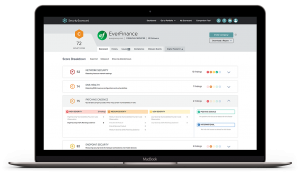The Internet of Things and water conservation: Coping with nature with big data and sensors
![]() The world is a very big place and problems can come from almost anywhere—trouble could be a drop in rainfall in the mountains that leads to a drought that affects crops, or an increase in hurricanes off the coast needing better predictive capabilities. A multitude of applications extend beyond the edges of cities into the rest of the world for the use of connected devices and sensors relaying information batch to be sifted, filtered, and processed into actionable opportunities.
The world is a very big place and problems can come from almost anywhere—trouble could be a drop in rainfall in the mountains that leads to a drought that affects crops, or an increase in hurricanes off the coast needing better predictive capabilities. A multitude of applications extend beyond the edges of cities into the rest of the world for the use of connected devices and sensors relaying information batch to be sifted, filtered, and processed into actionable opportunities.
For an idea of how the Internet of Things—how communication and sensor technology in general—can be leveraged to make better cities read Kyt Dotson’s “The City of Paradigm: The Internet of Things” for a short story and examples from IBM’s Smarter Cities initiative.
However, for large states such as California, rainfall and water can become equally important for keeping people in those cities fed. This means collecting data from agricultural businesses, who do their own collection and recordkeeping and might even have their own internal Industrial Internet across their farms to keep track of moisture and water use. However, often these businesses themselves are not interconnected. They’re especially not connected to cities where water also gets used.
Sensor networks, the ability to correlate weather patterns with upcoming rainfall (and historical patterns) and being able to see where water comes from, where it goes, and how its used could help prevent significant damage from droughts. And, in cities, it can be used to reduce wasted water so more of it can go to where it’s best-used.
Natural disaster and IoT initiatives
While much of the country has been hammered by winter storms, Silicon Valley and the rest of California have faced a record drought this year. The California drought is much bigger crisis for the nation as California’s agriculture sector supplies about half the nation’s fruit and vegetables and uses about 80 percent of the state’s water.
As California faces its worst drought on record, communities, agencies and firms are calling on the latest generation of technology to aid in the effort to conserve precious water. From cloud computing to the IoT technologies, Silicon Valley has an opportunity conserve water and to offer technological solutions to the problem.
The 1-year pilot was conducted among residents living within East Bay Municipal Utility District’s (EBMUD’s) service territory. A study from an independent agency showed that when participants received information comparing their water consumption to neighborhood averages, usage decreased by 5 percent on average.
The pilot was partially funded by the California Water Foundation and employed a behavioral water efficiency approach to encourage customers to reduce consumption. WaterSmart, a San Francisco-based venture-funded company, delivers a software-as-a-service (SaaS) tool, which applies analytics and behavioral science tools to crunch data and provide consumers with feedback information and tips for cutting consumption.
Peter Yolles of WaterSmart says that the biggest change since the last major California drought of 1987-92 is the rise of whole new technologies, software-as-a-service, big data, behavioral economics — all three of those are new since the last drought. The IoT program is helping the state meet its goal of a reducing water usage by 20 percent per capita statewide.
“With California experiencing a serious drought, improving outdoor water-use efficiency is an important way our region can achieve sustainable long-term water savings,” said Jason Foster, director of Public Outreach and Conservation for the Water Authority. “More than half of the water used at the average home is used outdoors. That creates big opportunities for reducing water use.”
Another company Leak Defense is developing a device for detecting water leaks in the home that will be similar to a smoke detector. The device uses the home’s Wi-Fi system to alert home owners when there is a potential water leak issue such as a running toilet. The device need to be installed to the outside of an intake pipe to detect the flow of water. The IoT device is smart enough to detect potential water leak issues.
A message from John Furrier, co-founder of SiliconANGLE:
Your vote of support is important to us and it helps us keep the content FREE.
One click below supports our mission to provide free, deep, and relevant content.
Join our community on YouTube
Join the community that includes more than 15,000 #CubeAlumni experts, including Amazon.com CEO Andy Jassy, Dell Technologies founder and CEO Michael Dell, Intel CEO Pat Gelsinger, and many more luminaries and experts.
THANK YOU









